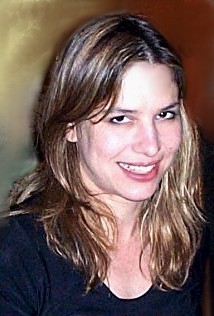Each Tuesday, the Daily Voice features a first-person narrative from a researcher explaining the science behind a recent grant, and the inspiration or impetus behind becoming a scientist at UMass Medical School. If you know of a researcher you’d like to see profiled, send an e-mail to UMassChanCommunications@umassmed.edu.
|
Gina M. Vincent, PhD, assistant professor of psychiatry, explains her grantNeuroimaging Youth with Callous-Unemotional CD & Comorbid Substance Abuse, National Institute on Drug Abuse, one year, $175,733; recommended for |
 |
This project is a training grant that will teach me how to conduct neuroimaging research that examines brain function, particularly as it relates to substance abuse. For the research component of the grant, I am examining how the brains of youth with callous-unemotional conduct disorder (CU-CD), who have histories of cocaine abuse, may differ in their responses to drug cravings than those of youth without this disorder who also abuse cocaine. CU-CD might be seen as the early signs or roots of adult psychopathic personality disorder.
CU-CD youth, along with psychopathic adults, are some of the heaviest and most chronic drug abusers. The goal of our work is to determine whether more effective substance abuse treatments can be designed. During the next five years, I will be observing and talking with clinicians in order to understand current best practices in substance abuse treatment. Once my research is completed, we will develop a practical way to modify treatment to work for these harder-to-treat individuals.
I was always curious about why some people seem to be able to live their lives without experiencing guilt or compassion for others. These individuals often do bad things and cause considerable destruction. Also, there are many adolescents who do bad things and get in trouble with the law; however, this is often normative behavior and not an indicator that they will grow up to be antisocial or callous people. These observations are why I became interested in forensic psychology and studying human behavior.
UMass Medical School has one of the best law and psychiatry training programs in the country and some of the best researchers and clinicians in forensic psychology. I accepted a position as a junior faculty here immediately after graduating so that I could work with Dr. Thomas Grisso [professor of psychiatry] on research pertaining to adolescents who get in trouble with the law and juvenile justice.
I get most excited about opportunities to help translate science into practice. For the last four years, I have been working with Tom Grisso and our team at UMMS on the National Youth Screening and Assessment Project (NYSAP), which is funded by the MacArthur Foundation. We conduct research on juvenile mental health issues and the risk for re-offending, as well as work with juvenile justice agencies to help them integrate this science—mostly through valid screening and assessment tools—into their practices to promote better outcomes for youth. My research on the adolescent brain and addiction is simply another way in which I hope to inform practice in the juvenile justice system.